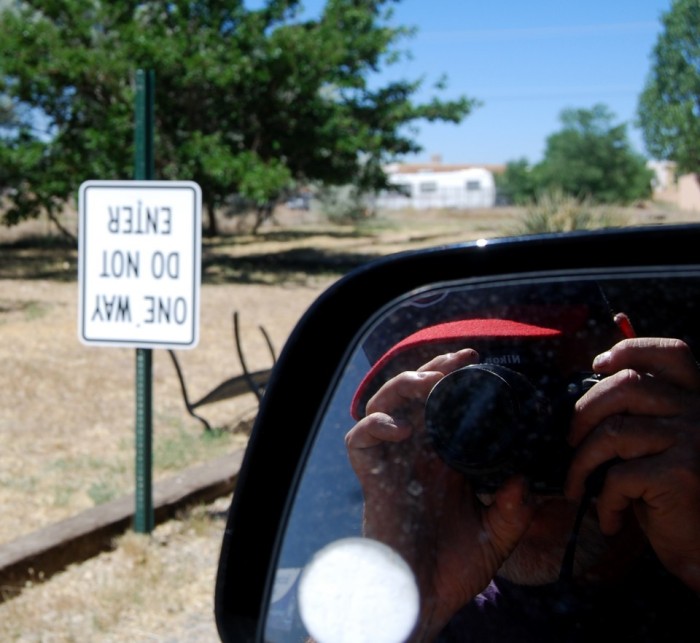
Reflection Option #3: A Letter to My Teacher–By Colleen Dougherty
Dr. Carol Parker, Ph.D, LPCC
Southwestern College, Santa Fe, NM
Dec. 3, 2012
Dear Carol,
I am writing to tell you about my experiences so far in the AmeriCorps program called OARS-Opportunities in AmeriCorps for Re-entry Success. This program exists in four of New Mexico’s state-run correctional facilities (prisons) including the Penitentiary in Santa Fe, and three other sites: Los Lunas (my site) Grants, and Las Cruces.
The purpose of this program is to increase the success rate of soon-to-be-released inmates to they don’t end up returning to prison. Our main “performance measure” in the OARS program is a Cog – Ed program, widely used in this setting, which was put together by a man named Gordon Graham. Graham spent 17+ years inside prisons before he finally figured out how to change his life and make things better.
The presentation includes a video piece (lectures by Graham and colleagues,) for each of 17 sessions in the workbook. We discuss the concepts from the book, and then do various workshops. The driving force in this program is the “Reality Model” in which we identify a behavior, then trace it to a belief or principle, and then to the need driving that belief. We then ask, “Is it true?” “Is it serving me in the long run?” and “How else can I meet this need?” (without ending up back in jail, with a continuing addiction, etc.) It’s pretty powerful stuff, and so far our guys seem to get a lot out of it.
There’s a lot of interaction between us (my teammate and I who are the facilitators) and the inmates (or “students,” as we prefer to call them.) We teach the classes in a classroom setting, with typically 7-11 students per class. The facility where I work is the “minimum restrict” part of the Central NM Correctional Facility and is referred to as “The Farm.” There are many rules here, but no barbed or razor wire. Inmates share “houses” which are like dormitories. Each house has several rooms with up to 6 inmates per room. Some of our students know each other already, some don’t. There are up to 225 men incarcerated here at any time. Our work falls under the Education Department, and our supervisor on site is the Education Director for both the “farm” and the central facility which is made up of levels 2-6 (level 6 is the highest security rating.)
Perhaps the strangest concept to get used to in this setting is the line between Compassion and Caution. In our training, which lasted for 3+ weeks, we were cautioned about the manipulation techniques of inmates in a prison, shown examples of weapons crafted from all manner of otherwise benign materials, and regaled with stories from the experiences of our trainers, to those in books and on film. We were given ID badges to be worn at all times, assigned keys to be kept on our person at all times, and given radios complete with red panic buttons on the top. Then, we sat down in front of these men, looked into their eyes and began to guide them on a journey of searching their souls. The material we facilitate necessitates a connection to them as human beings; for without that, and without gaining some measure of trust from them, the program would be useless.
We talk about Empathy, and of how it relates to the honesty and courage it takes to change our own behaviors and beliefs in relation to the world around us. We ourselves, as we hear their stories and witness their pain, experience Empathy toward them. However, we are not to become advocates for them. This makes sense because we hear only their sides of the stories, and also because in order to maintain order in a facility such as this, a sort of solidarity among the staff must be present. We cannot take sides. The best we can give them is to advocate for the authenticity of their own minds, their own beliefs, and their visions for their futures.
As I get to know these men in classes that go for three to six hours a day, for two to four weeks at a time, I am confronted with the reality that they are human beings broken by life, in the same ways many of us are broken by life. Yet they have ended up here. And for every one of them there are probably 100 or more people n the outside doing and feeling the same things in their own houses, neighborhoods, towns, etc. Of course I am aware that the ones incarcerated for multiple DUI’s could have at any time killed me or someone I care about. It is frightening, however, to know how many more like them are still out here… Tragic also is the realization that many have ended up here due to the inability to deal with grief and loss. It seems surreal to think that the inability to deal with losing a wife or mother should result in the complete loss of freedom…to being punished, as it were, rather than healed. The state of our world in relation to substance abuse becomes profoundly clear in this place as well. This small segment of our society is but the canary in the coal mine. The realities of; 1) the unmet needs that haunt people into seeking refuge and wholeness through drugs and alcohol, and, 2) the vicious and tenacious hold these substances have on human beings brings again an element of the surreal that imprisonment should be the result of so much pain and confusion.
My training at Southwestern College is truly proving to be a saving grace for me in this experience. The awareness I have of myself, my mental and emotional habits, my “triggers,” etc. has allowed me to hold both the Compassion and Caution this place requires. I have learned how to (as I mentioned) advocate for an individual’s clarity and wholeness regardless of, yet still aware of, the circumstances around them. My confidence in my ability to guide (or nudge) someone through their thought patterns is evident almost daily, and I am grateful for that. It would be easy to get caught up in all the pain, and to wonder if what I had done was “enough…” But at the end of the day, I come home, tired, but without carrying these orange-clad men on my back.
That being said, I also know that I am making a difference for these guys. At this point, they are required to be in our classes, which could predict some resentful attitudes. But they show up every day, for many days. They listen, nod their heads, tell stories, ask questions, and do all the work in their workbooks… They smile and laugh, and thank us for being there, for being real, for caring about their futures. Many are like children in my mind, who relish every moment that someone is paying attention to them. In their faces I see eyes brighten up when they “get” something. I see deep contemplation when they’re trying to understand a concept, and to find the connection inside themselves. Several “graduates” have come by to say hello. Some have encouraged others to try to get into the class. So, I do my best, and hope for the best for all of them. At the same time, I hold the truth that the outcome is not up to me, and I must trust that. As I did every day at the animal shelter, I pray for healing, and for more love and compassion in the world, and I am happy to be a representative of what I wish, hope and pray for.
Thank you for everything, Carol. I have a long way to go yet in this endeavor, so stay tuned!
As always,
Colleen Dougherty
 Southwestern College Santa Fe, NM
Southwestern College Santa Fe, NM





